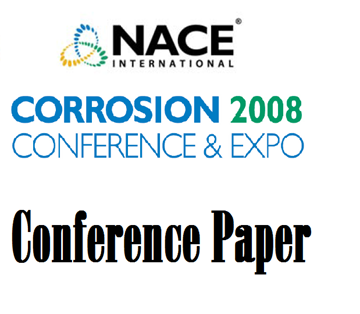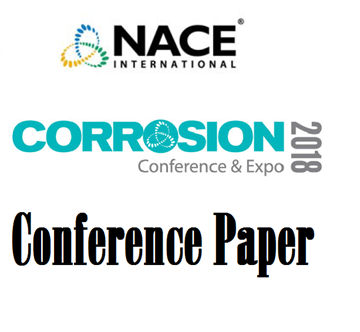Search
Products tagged with 'steel'
View as
Sort by
Display
per page
08265 Modeling of Carbonate-Bicarbonate Stress Corrosion Cracking of Pipeline Steels
Product Number:
51300-08265-SG
ISBN:
08265 2008 CP
Publication Date:
2008
$20.00
51316-7038-Corrosion of Metals in Treated Wood Examined by Synchrotron Based Xanes and XFM
Product Number:
51316-7038-SG
ISBN:
7038 2016 CP
Publication Date:
2016
$20.00
51317--9593-Update on Corrosion Performance of CBPC Coatings in Aggressive Bridge Environment
Product Number:
51317--9593-SG
ISBN:
9593 2017 CP
Publication Date:
2017
$20.00
51318-10524-Probabilistic Performance Assessment of Bolts Used in Oil and Gas Drilling and Production Systems
Product Number:
51318-10524-SG
Publication Date:
2018
$20.00
51318-10631-Electrochemical Behavior of UNS N08031 in Green-Death Solution
Product Number:
51318-10631-SG
Publication Date:
2018
$20.00
51318-10875-Chemical interaction of Austenitic and Ferritic Steels with B4C Powder in Liquid Sodium at 600°C
Product Number:
51318-10875-SG
Publication Date:
2018
$20.00
51318-11135-New coatings based on PANI-hexacyanoferrate-nano-TiO2 composites to improve their anticorrosive resistance
Product Number:
51318-11135-SG
Publication Date:
2018
$20.00
51318-11279-Electrochemical Methods to Quantify Alloy Waste Form Degradation
Product Number:
51318-11279-SG
Publication Date:
2018
$20.00
51318-11393-Picture for Development of Corrosion Rate Monitoring Method of Steel in Concrete, - CIPE (Current Interrupted Polarizing Extrapolation Method) -
Product Number:
51318-11393-SG
Publication Date:
2018
$20.00
51318-11573-Assessment of Long-term Durability of TDG Coated Steel Components in Marine Bridge Environment
Product Number:
51318-11573-SG
Publication Date:
2018
$20.00
ANSI/NACE MR0175-HD2001-SG Sulfide Stress Cracking Resistant Metallic Materials for Oilfield Equipment-HD2001
Product Number:
21304-HD2001
ISBN:
1-57590-021-1
Publication Date:
2001
$179.00
Application of Electrochemical Noise to Identify Corrosion Development of Steel with Galvanized Protective Coatings
Product Number:
51322-17873-SG
Publication Date:
2022
$20.00












